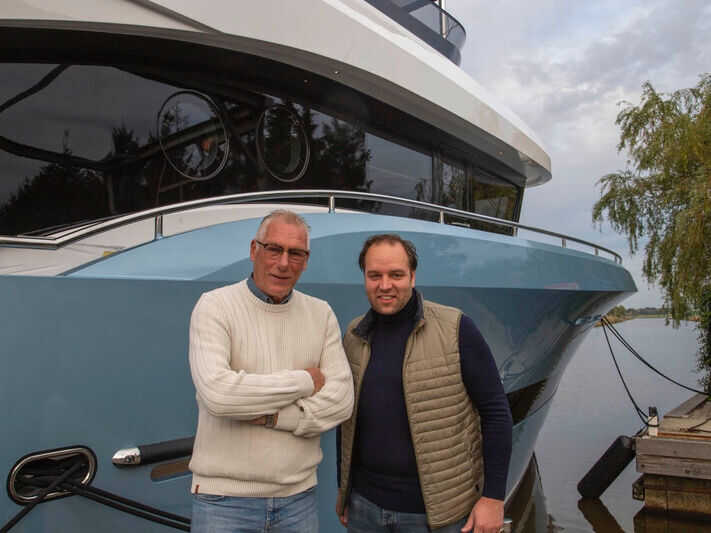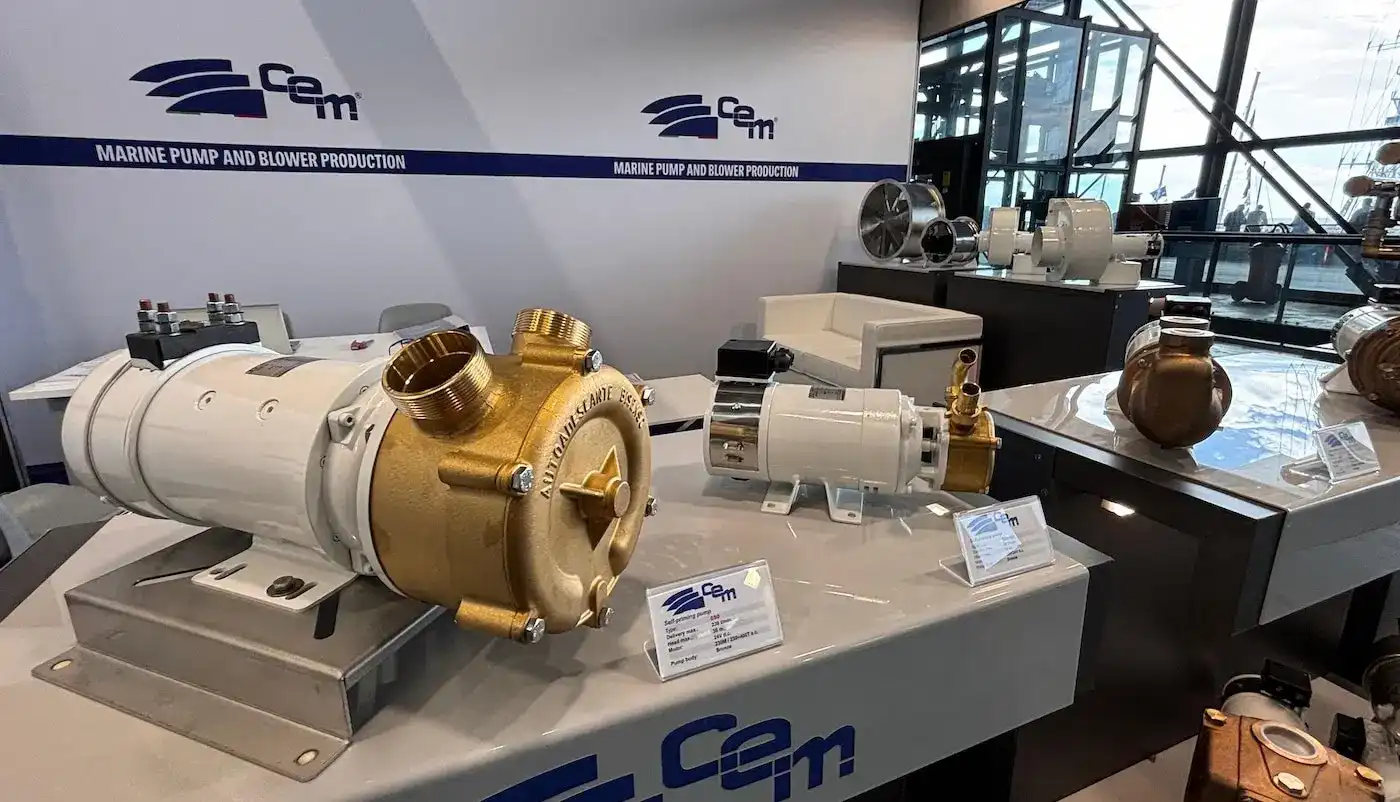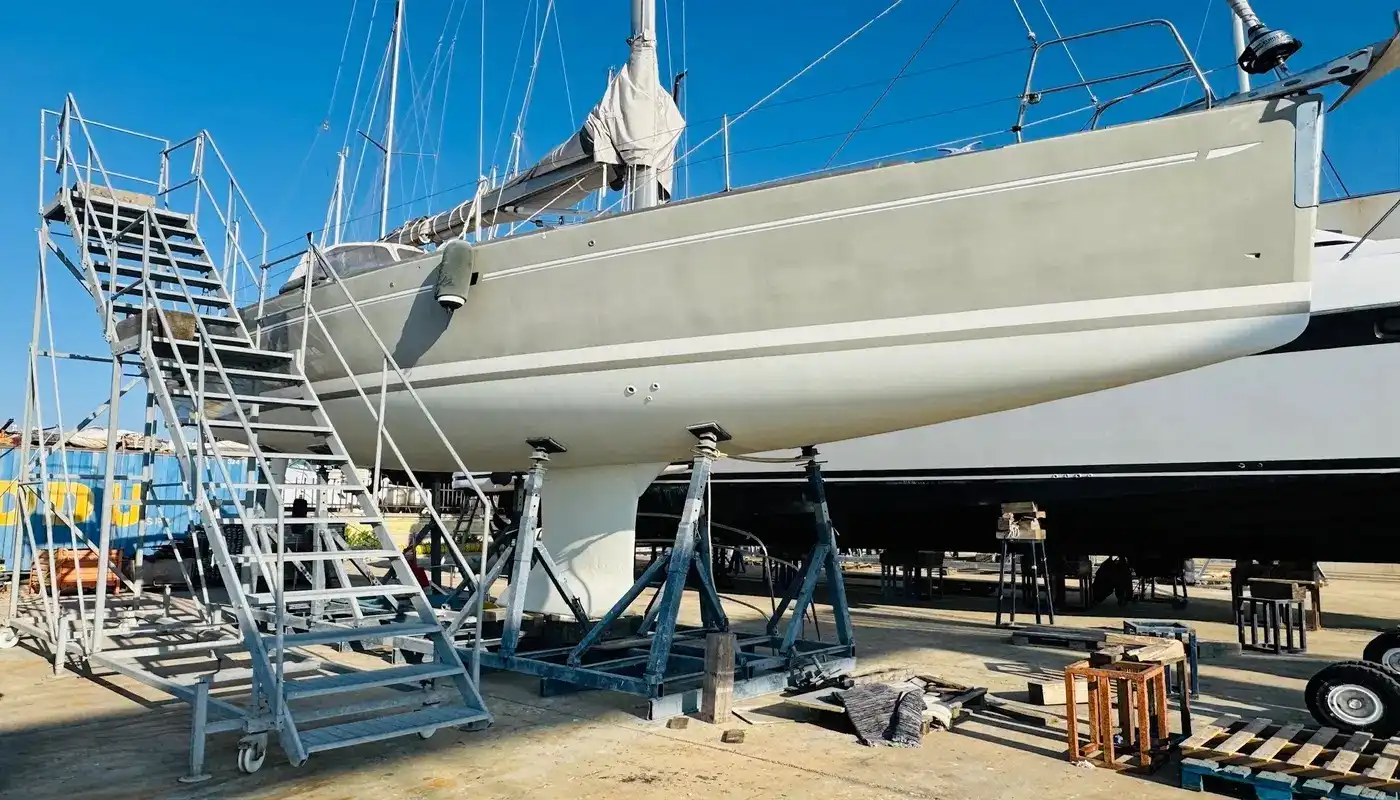Entrepreneur in Yachting: Hans Webbink of Steeler Yachts

Francesca Webster sits down with Hans Webbink, founder and CEO of Steeler Yachts, in this exclusive interview about his entrepreneurial journey.
Since its founding in 2010, Steeler Yachts has carved out a distinct identity in the yachting world – one defined by full customisation, innovative design, and a deeply personal approach to craftsmanship. In this interview, founder Hans Webbink reflects on his career, the shipyard’s unconventional journey, the challenges of scaling a boutique brand, and how recent milestones – including the acquisition of Holterman Shipyard – are setting the stage for the next chapter in Steeler’s evolution.
You had a varied corporate career before establishing Steeler Yachts, can you share a bit of your story?
I began competitive sailing as an Optimist at the age of four, and from that moment, boats and watersports became a central part of my life. While studying Business Economics at Groningen University, I was part of the Dutch Olympic team in the Flying Dutchman class. To support my sailing, I began trading sailboats.
After university, I joined Shell as an oil trader, living and working across Europe, the Middle East and the Caribbean. Sailing became a weekend pursuit. Following the Gulf War – during which I spent five months as a ‘guest’ of Saddam Hussein while serving as GM of Shell Kuwait – I left Shell and took on a global marketing and sales role at Philips. However, the constant relocations began to wear thin. By forty, I realised my true passion lay in boats.
In 2001, I left the corporate world and launched Antaris, a yard specialising in fibreglass dayboats and cruisers. Focused on functionality through innovation, we became market leader in the Netherlands by 2008, producing 300 boats annually. After merging with Maril and Makma to form Aquatec Industries – which captured over 50% market share – I sold the company in search of a new challenge, and founded Steeler Yachts.
The vision was bold: steel yachts that were twice as fast, twice as elegant, and fully custom-built. Steeler launched strongly in 2010, but the financial crisis soon hit, shrinking the steel yacht market by 60%. We pivoted, aiming to compete with leading producers of fast fibreglass yachts. In collaboration with Royal Huisman, we introduced the NG43 Offshore – our first aluminium planing motoryacht. This highly efficient, custom-built vessel won the 2016 European Powerboat of the Year award, making Steeler the first Dutch yard to triumph in this competitive category.
When you founded Steeler Yachts in 2010, what gap in the market were you aiming to fill and how has that vision evolved?
At the time, steel motoryachts had a poor reputation – slow, boxy, and standardised, often likened to “caravans on the water.” Buyers had little room for personalisation, which felt entirely at odds with the investment required.
Steeler was created to change that. From the outset, our philosophy was simple: we don’t sell yachts – we build exactly what each client needs. Full customisation became our cornerstone. Working with designer Martin Bekebrede, we launched the NG series – a platform combining timeless design with exceptional space utilisation. No two builds are alike, and we’ve delivered 110 unique motoryachts to date.
We also challenged performance expectations. Instead of limiting clients to inland cruising speeds, we designed yachts capable of 10 to 15 knots – ideal for both rivers and coastal waters. As the market responded, recognition followed, with Steeler receiving awards and nominations almost every year since 2011. In 2013, we collaborated with Royal Huisman to develop our first aluminium planing yacht, the NG43 Offshore. Its exceptional efficiency and handling won the European Powerboat of the Year award in 2016 – the first Dutch yard to do so in the production-dominated category.
Our move into aluminium planing yachts expanded the concept further. Aluminium offered strength, efficiency, and stability – a compelling alternative to mass-produced fibreglass yachts. Though more costly to build, the result was a better yacht.
While our client-first approach mirrors that of Dutch superyacht builders, it’s rare in the 50 to 100-foot segment. Steeler now attracts owners seeking a more private, lower-maintenance alternative to larger yachts – without compromising on quality. Many describe us as a “barn find” in the market.
With the acquisition of Holterman Shipyard and sixteen yachts currently in build – a record for us – we’re focused on growing global recognition for a boutique shipyard offering a superyacht experience on a smaller scale.
What were some of the biggest challenges in scaling a brand that prioritises bespoke craftsmanship?
The main challenges have been twofold. First, limited resources for global marketing have made it difficult to reach our niche audience – highly discerning clients who often don’t know about us until they “discover” Steeler. Fortunately, once they do, our 99% customer loyalty since 2010 speaks volumes.
Second, inflation presents risks during our typical two-year build cycle. This requires a foundation of trust and transparency with clients to navigate unexpected cost fluctuations together.
What sets Steeler Yachts apart in a highly competitive industry?
In the 50 to 100-foot segment, our proposition is unique: full customisation, innovative design, personal service, and top-tier craftsmanship. While we lack economies of scale, this is precisely why our clients choose us – for our boutique approach and relentless focus on exceeding expectations.
What led to the decision to acquire Holterman – and why now?
A surge in orders for our Ocean Explorer, Enigma, Ace 59, Supersport, and S-lines created a capacity bottleneck at our yard in Steenwijk. Holterman, just ten minutes away, had the space, skilled team, and shared values – many of their staff even had previous ties to Steeler.
Although the bankruptcy was traumatic for the Holterman team, the transition was smooth. Production in Meppel, the Netherlands has resumed at full strength, with both teams now working seamlessly together. Initially, there was natural rivalry – we had been competitors for years. But through open dialogue, shared vision, and simply working side-by-side, that tension quickly turned into mutual respect. Today, there’s a strong sense of collaboration and learning between both teams.
What’s your vision for Steeler Yachts over the next five years?
With added capacity, we aim to deliver at least ten yachts per year without compromising our boutique identity. This scale enables greater investment in product development and branding – positioning Steeler as a global leader in the niche of small, custom superyachts.
What advice would you give someone starting a yacht-building company today?
If you think you’ve been busy in corporate life – just wait. But if you have a vision that genuinely offers something different for yacht buyers, go for it. Be brutally honest about your strengths, surround yourself with the best, and build a business plan that leaves no blind spots.



